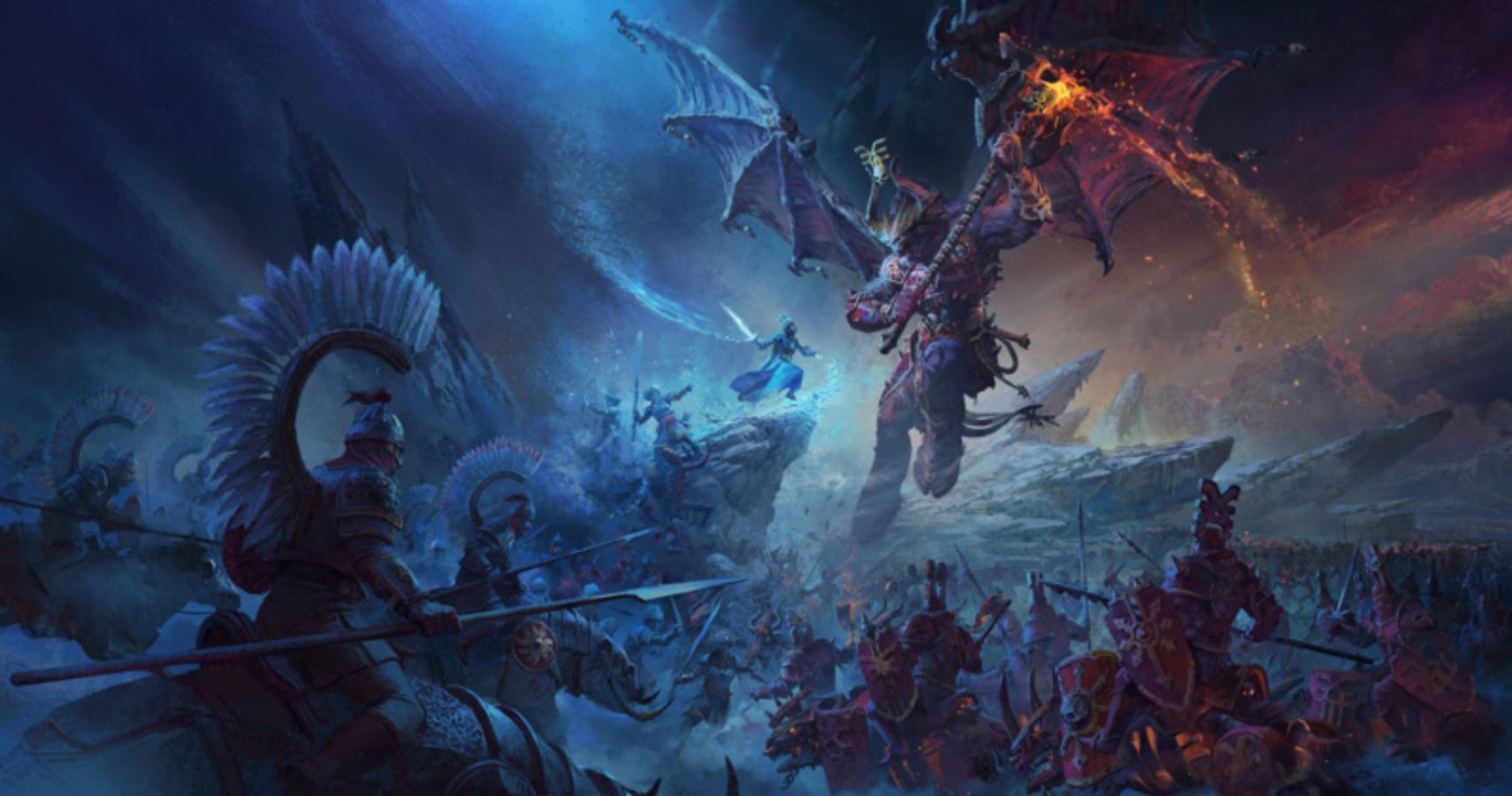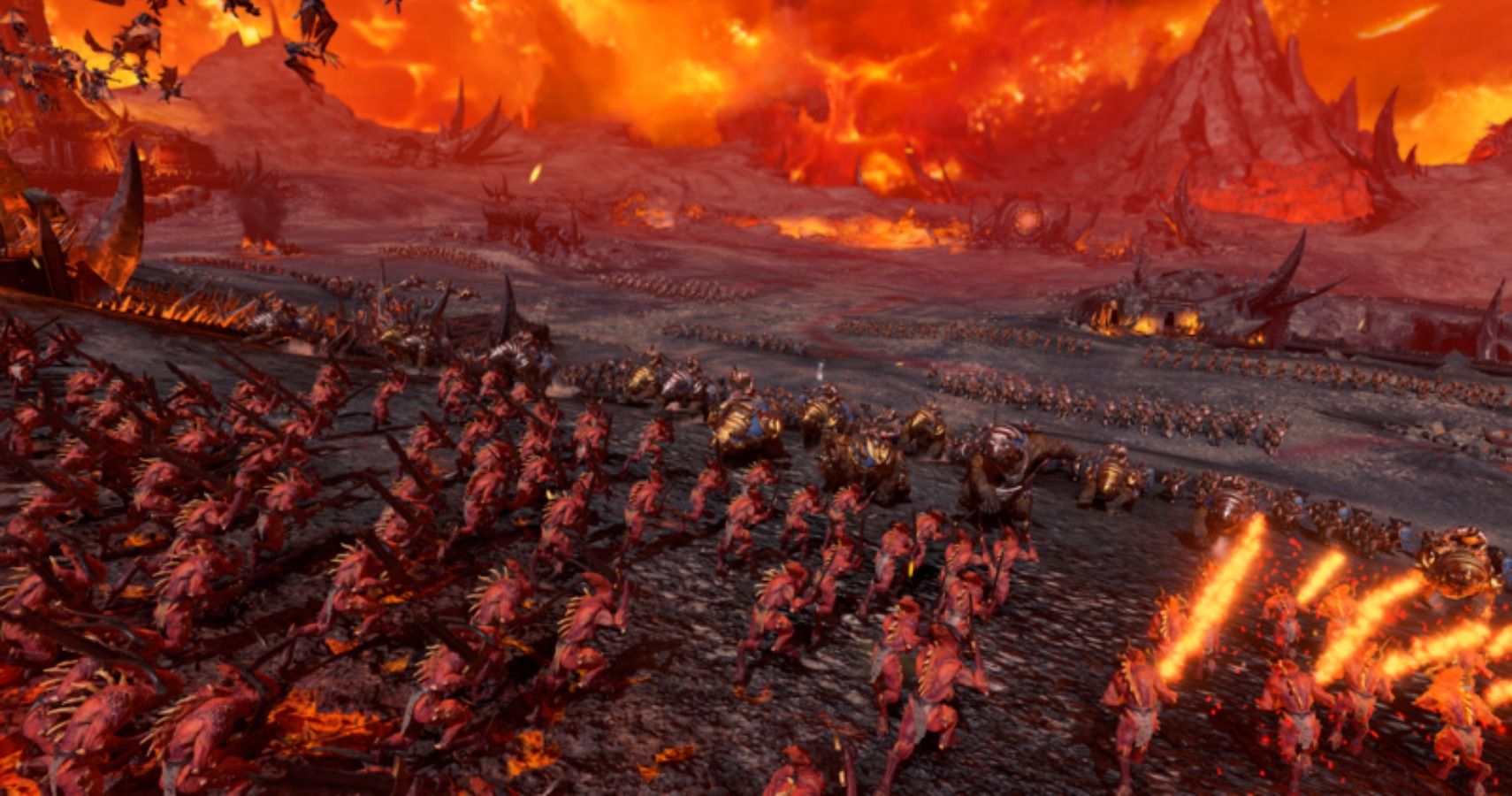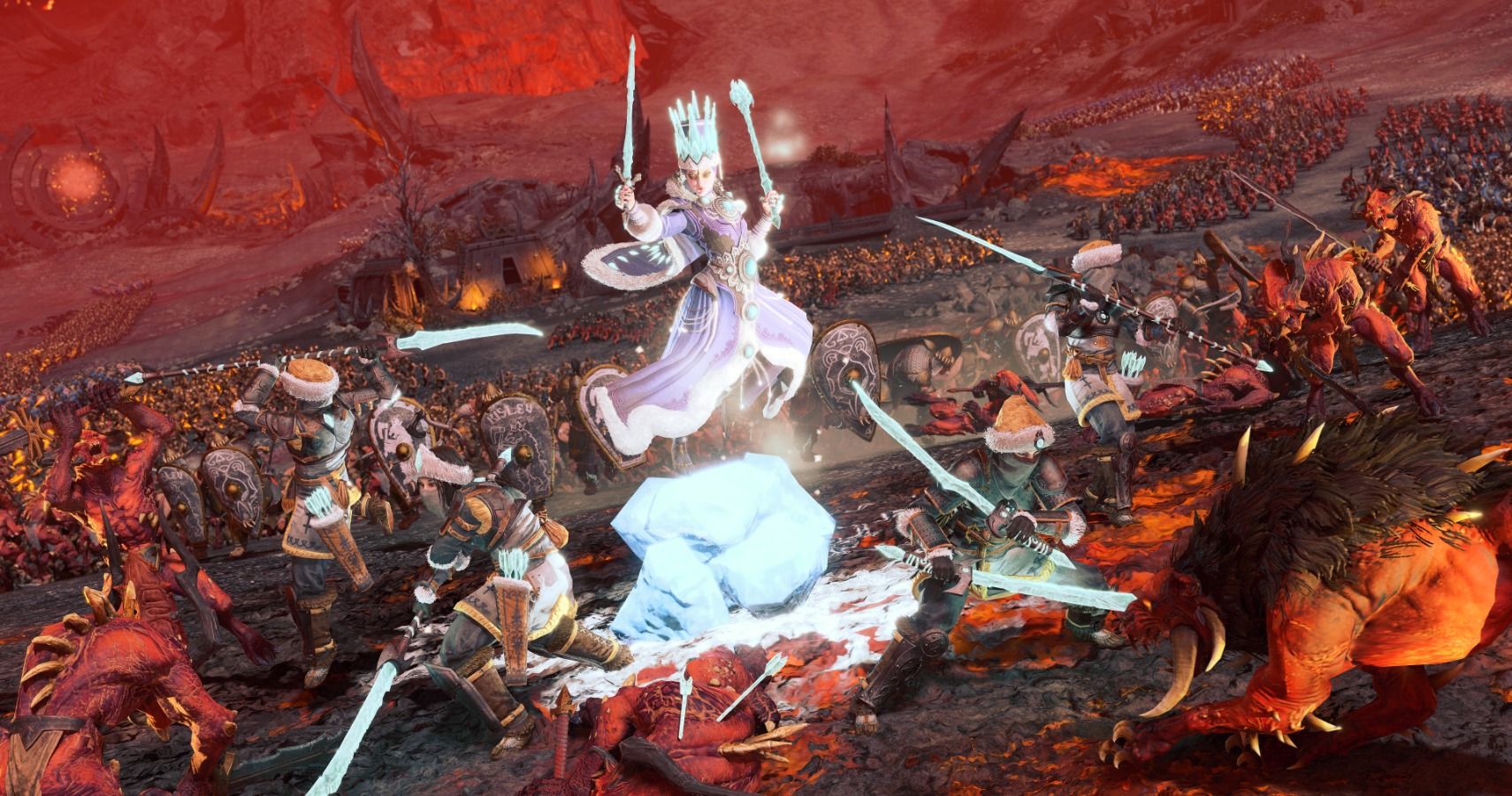Total War: Warhammer 3 is the final instalment in Creative Assembly’s widely beloved trilogy, although it’s not necessarily the end of the saga. On top of lead battle designer Jim Whitston saying that Warhammer 3 is “going to be endless,” we chatted to both Whitston and game designer James Martin about the future of grand strategy design. As you might expect from a trailblazer as prodigious and prolific as Creative Assembly, said future is not just bright - it’s incandescent.
Whitston explains that perhaps the biggest lesson he learned from working on this saga occurred during development of its imaugural game and came from Games Workshop’s proprietary source material: to embrace asymmetry.
“As a games developer, you're always looking for the most efficient way of getting content into your game,” Whitston says. “Sometimes that can mean that things get homogenized because that allows you to do, say, a lot of races that are all very similar to each other.
“What we realised from playing the tabletop game in the early part of pre-production on the first game is how different each of these races felt on the battlefield. The temptation there is to find ways around that, to ask Games Workshop maybe to invent a unit to fill a hole in a roster or to have a mechanic overcome some shortcoming. We realised that the charm of the game and the core of the game were those differences between each of the races.”
Whitston goes on to explain that incorporating these differences into the game was “two-edged sword.” Obviously crafting distinct playstyles for each race as opposed to adopting a more homogenized solution necessitated a lot of work, particularly in balancing. But, given that these problems arose early in the trilogy, the team had quite a lot of practice by the time Warhammer 3 rolled around. As it stands, they are absolutely certain that enriching moment-to-moment play based on these principles is worth the difficulty in designing them.
“So yeah, that's the big learning that I've had from the series,” Whitston says. “As to what comes for me next? I’m not entirely sure, and to be honest, we're still so focused on getting this game in the box that that's the last of my concerns at the moment. It’s just enjoyable… we’re past alpha with this game so we're feature complete and it's an enjoyable process now of polishing what we've created and really getting it ready for everyone to enjoy.”
Still, even with no concrete information about what comes next for Warhammer 3 - aside from DLC, of course - I felt the need to ask Whitston and Martin about what the future of strategy design looks like in general. Both offered fascinating answers that get to the heart of the genesis of the genre, as well as the potential it holds for future innovation.
“I think it’s embracing the difference between the various factions that are present in your game,” Whitston says, hearkening back to his earlier comments on crafting individually distinct styles of play for each race. “There's always a temptation, as a designer, to make things more homogenous just so you can increase the breadth of content within your game, but actually the fun comes from depth within the content.
“In doing this trilogy and in embracing the asymmetry in the feature set and the rosters between each of these races, that's made the series the success that it has been, even though that has cost us as developers in terms of the amount of effort and time we have to put into putting together these epic campaign games.”
Martin agrees with Whitston, echoing his thoughts about asymmetry, as well as offering specific examples of it in action in Warhammer 3.
“I think it has a lot to do with asymmetry, then attachment to something that you're fighting for,” Martin explains, noting that even if he plays the same faction as I do, they will ultimately still be very different.
“All of that, I think, is what makes strategies great,” he continues. “You can approach things in multiple different ways and you get so much replayability from playing as one faction compared to another. If you compare Khorne and Kislev, they function completely differently. You get a completely different sense of achievement if you complete it in one way with one faction compared to the other. So there are endless possibilities and I think that's what it's really about.”
“I touched on it earlier, [but] it’s about offering players challenges in different time frames,” Whitston adds. “So always having something to think about in the short term, several things to think about in the median term, and then maybe one or two big things in the long term. Driving towards the balance between those three creates the interest for me personally, as a player, and I’m sure that’s true of most people who are into strategy games.”



